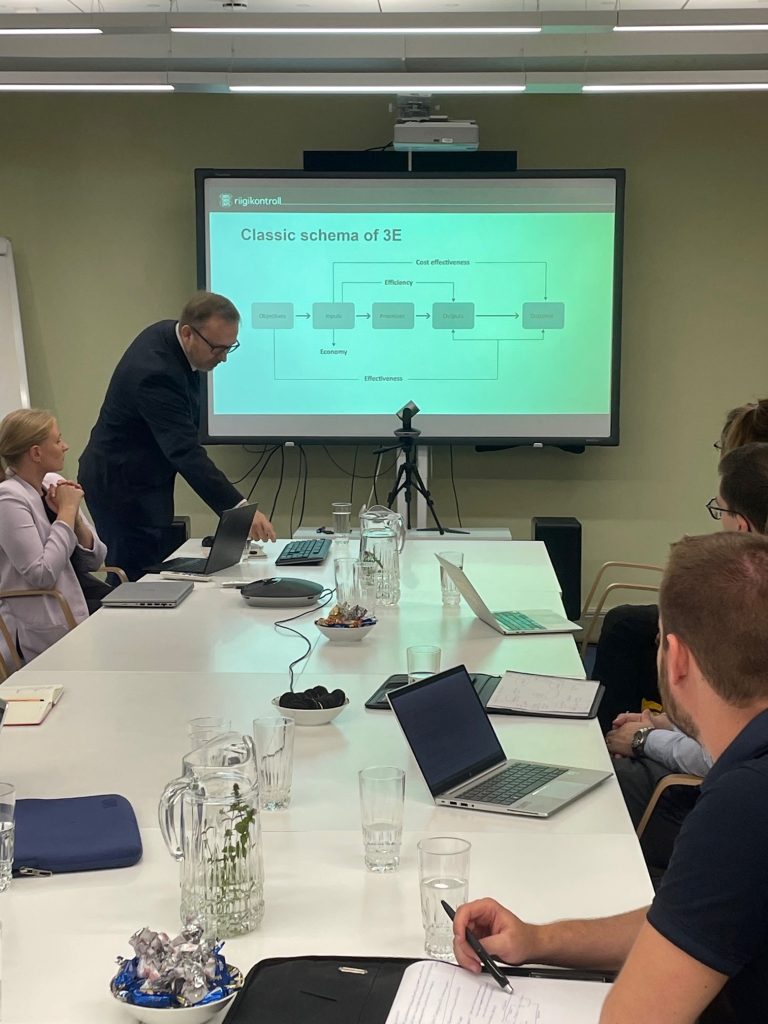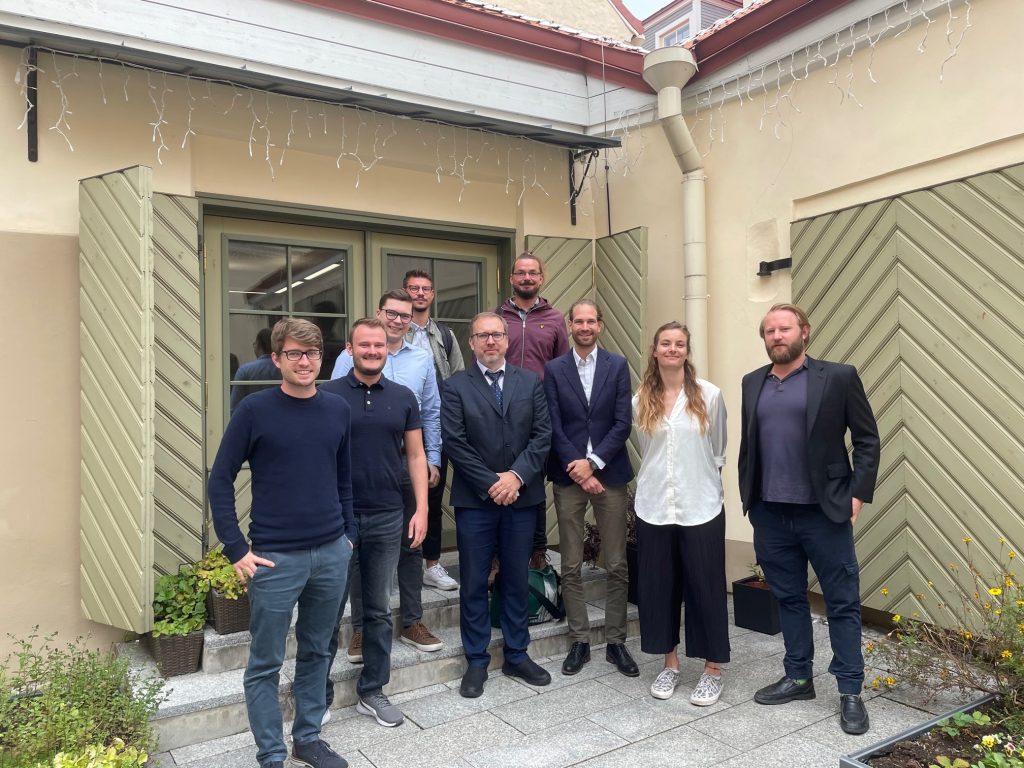The two Estonian words “Riigikontroll” and “Aitäh” probably best describe our final day in the Baltic state. And they even have something in common: Both are quite important to the lives of Estonian citizens.
However, while “Aitäh” simply means “thank you” and is used frequently in everyday situations, “Riigikontroll” is the Estonian name of the National Audit Office / Supreme Audit Institution (SAI). “Riigikontroll” might be of rather minor importance to citizens language-wise though, but the organizations’ mandate and work is deemed to have a substantial impact on citizens’ daily lives.
We started our day once more with a short morning briefing and discussed the relevance of Supreme Audit Institutions (SAIs) in modern democracies and the relevance of their work for citizens and taxpayers. Generally (and from a principal-agent theory perspective), SAIs serve the purpose of reducing information asymmetries between the executive branch of government and the parliament (legislative) as well as between politicians and their constituency by issuing independent audit opinions and providing evaluations of government efficiency and effectiveness. With this in mind, we visited the Estonian National Audit Office (NAO).
At the NAO we were warmly welcomed by Krislin Kivi, Head of International Relations, who guided us through the winding early 20th century building located on the Toompea Hill in the heart of Tallinn’s old city. Our visit to the NAO started with a general introduction on the role and mandate. The scope of the NAO’s audits comprises both the Estonian national government as well as the country’s 79 local governments. We further learned that the NAO is a Westminster type SAI that is headed by a single auditor general who is appointed for a five-year term. The output of the NAO’s work is in most cases an audit report that includes recommendations and that is issued to the parliament. As in most European countries, the recommendations are not mandatory, but auditees should comment and submit a written response to the NAO. However, they also issue reviews, memorandums and blog posts.
With increasing digitalization and automation of government services and processes, they consider the relative relevance of financial audit to decrease compared to so-called performance audits. Performance audits, as the word probably already suggests, aim at assessing the performance of state interventions and public service delivery modalities in view of the three E’s Economy, Efficiency and Effectiveness. Subjects of performance audits is in most cases the impact and/or implementation of policies such as for instance state subsidies or the introduction of the Adult Dental Care Benefit program. The three E’s are assessed through qualitative data collected through interviews and focus groups or through more quantitative methods including international benchmarking.

We were also given the opportunity to discuss issues and challenges of performance auditing with Janus, who works in the performance audit team of the NAO. One of the key challenges mentioned was the communication of audit results. To induce changes and make the findings relevant, dissemination of results is important. However, when mass media is taking up their findings, then they sometimes exaggerate. This could impair the relationship to auditees. Hence, communication is considered key. After thanking Krislin and Janus for their insightful presentation we closed the meeting with a group picture in the backyard.
The visit to the NAO marked the end of a fully packed but highly interesting week.
Thank you Estonia – Aitäh!
